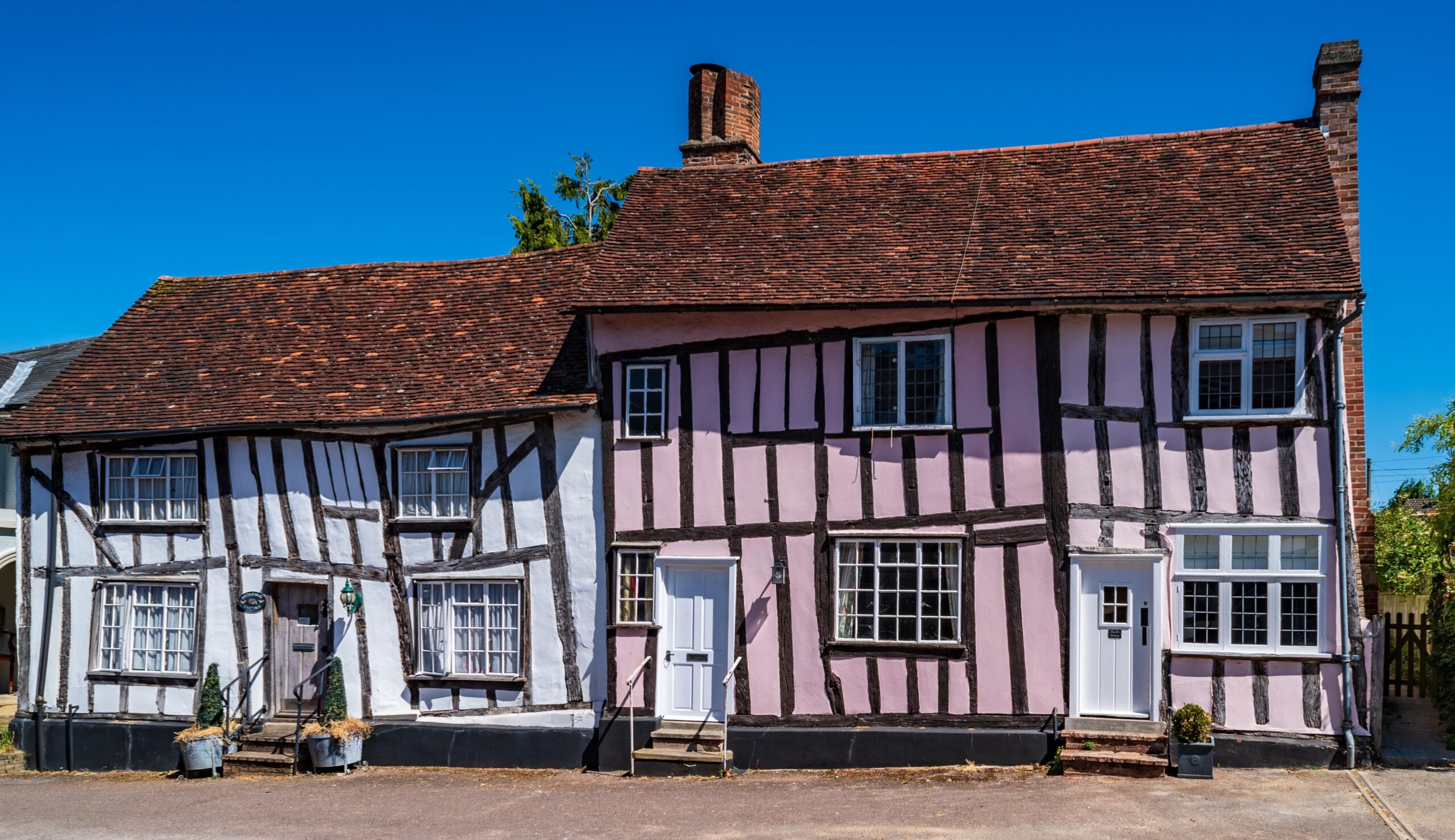Suffolk, lying along England’s eastern edge, is a county where history and landscape meet in gentle harmony. It is a land of big skies, tidal estuaries, medieval towns, and coastal villages that have retained their character across centuries. Unlike counties defined by mountains or dramatic cliffs, Suffolk’s beauty lies in its subtleties: soft rolling farmland, shingle beaches, and heathlands where the sea and countryside blend seamlessly.
At the heart of Suffolk’s identity is its heritage as a medieval wool county. Prosperity from the cloth trade in the Middle Ages funded the grand churches of towns like Lavenham, Long Melford, and Hadleigh, which still stand today as “wool churches,” rich with intricate stonework and stained glass. Villages with timber-framed houses lean across narrow lanes, giving the sense that little has changed since the 15th century.
Yet Suffolk is not merely a county of the past. Its coastline is alive with seaside resorts, fishing villages, and cultural centres. Aldeburgh and Snape Maltings host world-class music festivals, Southwold thrives with its pier and brewery, and the wild Suffolk Coast & Heaths AONB preserves landscapes of rare beauty. Even the story of Dunwich, the medieval town swallowed by the sea, adds a haunting element to Suffolk’s relationship with its coastline.
Suffolk is also deeply English in spirit. Market towns like Bury St Edmunds and Woodbridge balance history with everyday life, while rural traditions remain vibrant through fairs, festivals, and crafts. Writers and artists, from George Crabbe to Benjamin Britten, have long found inspiration here, drawn to the county’s understated charm.
To journey through Suffolk is to enter a quieter England: unhurried, rooted in tradition, and blessed with a beauty that reveals itself slowly. It is not a county that shouts for attention, but one that lingers in memory—through its churches, its coast, and the timeless rhythm of its landscapes.
Bury St Edmunds
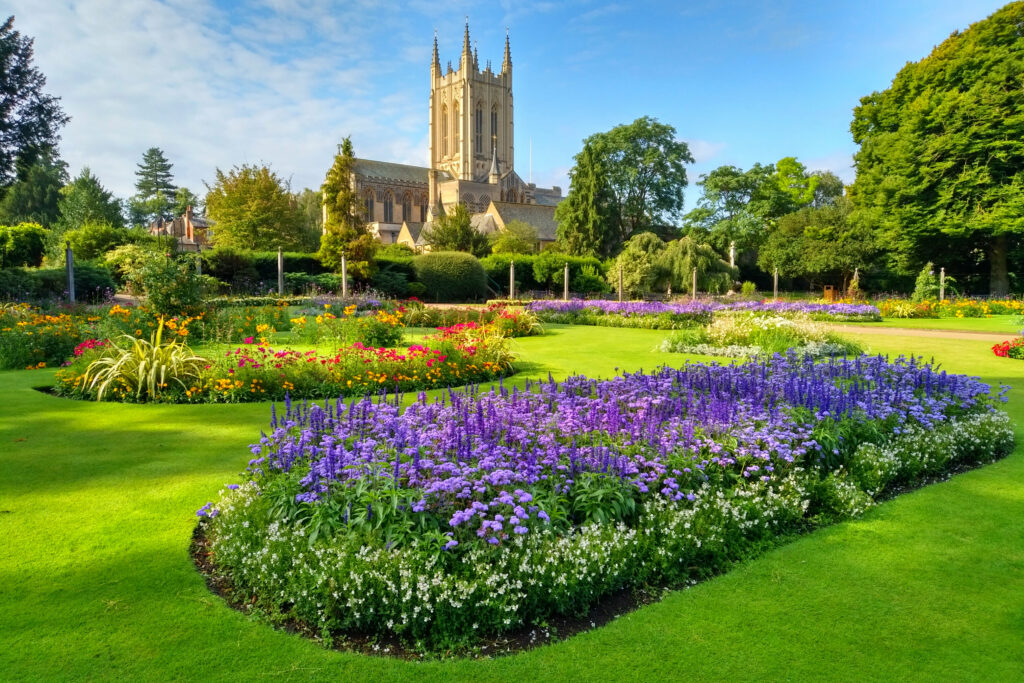
In the heart of Suffolk lies Bury St Edmunds, a market town steeped in layers of history, faith, and culture. Once one of the most important religious centres in medieval England, it grew around the mighty abbey dedicated to St Edmund, the martyred king of East Anglia. Though the abbey was dissolved during the Reformation, its extensive ruins remain, scattered across the tranquil Abbey Gardens, where arches, walls, and fragments whisper of the town’s sacred past.
Rising beside them is St Edmundsbury Cathedral, whose modern extensions blend seamlessly with medieval foundations. Its tower, completed in 2005, is a reminder that Suffolk’s spiritual life is not frozen in the past but continues to evolve. Just beyond the abbey precincts, the Greene King Brewery has been part of the town for over 200 years, its landmark chimney punctuating the skyline and offering tours that connect heritage with industry.
Bury St Edmunds has long been a place where national history played out. It was here, in 1214, that a group of barons swore an oath that led directly to the sealing of Magna Carta. The town’s medieval street plan survives in its winding lanes, complemented by elegant Georgian squares and theatres that speak of later prosperity. Today, the Theatre Royal, the only surviving Regency playhouse in Britain, continues to host performances in an intimate setting.
The town is also known for its lively markets, held twice a week, and its thriving café and cultural scene, which draws visitors and locals alike. With its mix of medieval grandeur, Georgian refinement, and living community, Bury St Edmunds represents Suffolk at its richest—a place where history and daily life are seamlessly interwoven.
Ipswich
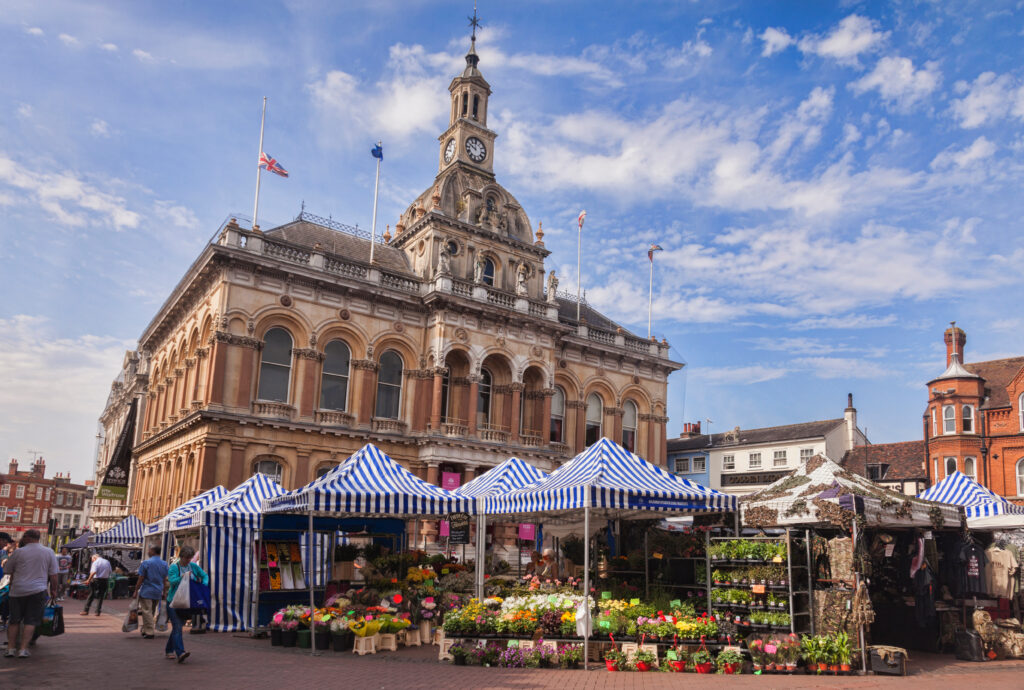
As one of the oldest continuously inhabited towns in England, Ipswich has over 1,500 years of history layered into its streets. Founded by the Anglo-Saxons as a trading port, its position on the River Orwell ensured prosperity through the medieval wool trade and later as a bustling maritime town.
Today, Ipswich is a blend of the historic and the modern. The waterfront, once filled with warehouses, has been transformed into a vibrant quarter of cafés, galleries, and the University of Suffolk campus. Boats still line the marina, linking past and present maritime life.
The town centre preserves medieval lanes such as St Nicholas Street, where half-timbered houses lean toward one another, while impressive churches like St Mary-le-Tower testify to its prosperity.
Cultural life thrives here. The Ipswich Museum and Christchurch Mansion hold treasures spanning Roman artefacts to Gainsborough paintings, while the New Wolsey Theatre brings contemporary performance to local audiences. Even the surrounding parks—like Christchurch Park, with its sweeping lawns and mansion house—add a green rhythm to the town.
Ipswich may not shout its history, but in its waterfront, medieval core, and vibrant culture, it offers a portrait of a town that has endured and adapted for centuries, still very much alive today.
Sutton Hoo
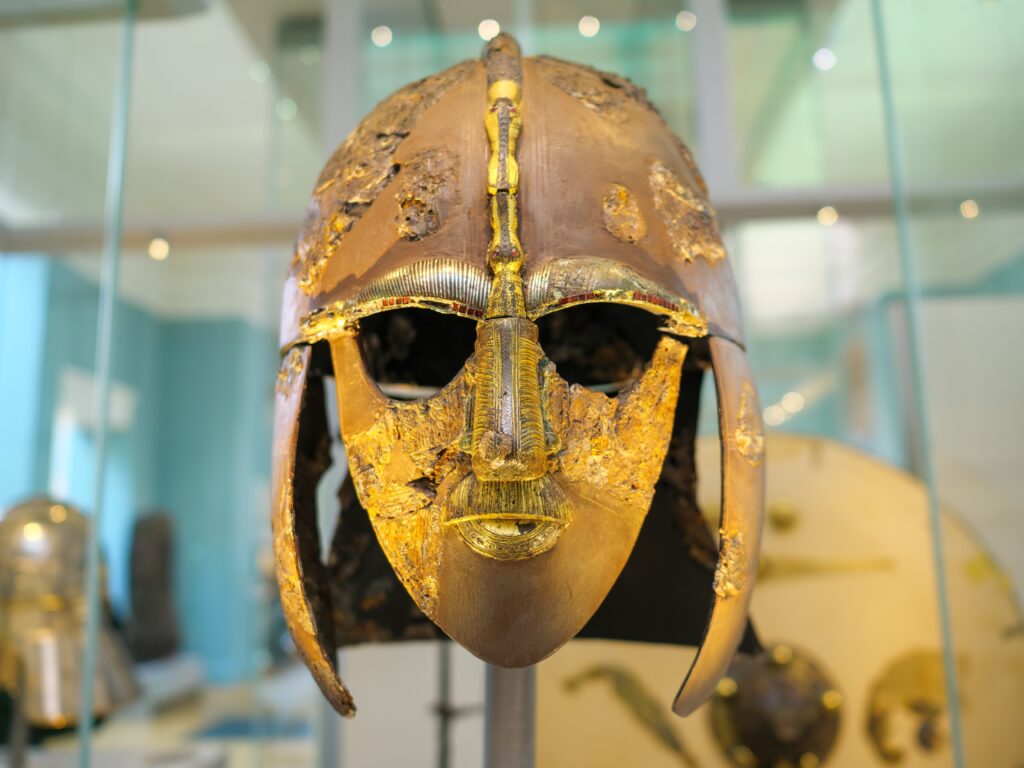
Few sites capture the imagination like Sutton Hoo, where in 1939 archaeologists uncovered one of the most extraordinary finds in British history: an Anglo-Saxon ship burial from the 7th century, believed to belong to a king of East Anglia.
Buried within a 90-foot ship, treasures of gold, silver, and weaponry revealed a civilisation far more sophisticated than once imagined. The iconic helmet, with its intricate metalwork, has become a symbol of Anglo-Saxon England, transforming our understanding of the so-called “Dark Ages.”
Today, Sutton Hoo is managed by the National Trust. Visitors can explore the burial mounds, wander trails through tranquil woodland, and enter the exhibition halls that display replicas and interpret the significance of the finds (the originals are housed in the British Museum). The reconstructed Great Hall offers a tangible sense of royal life in early medieval England.
More than an archaeological site, Sutton Hoo is a place of mystery and imagination. Standing on the grassy mounds overlooking the River Deben, it is easy to picture the ship being hauled to its resting place, carrying its king to eternity. Sutton Hoo connects landscape, legend, and national identity in a way few sites can.
Framlingham Castle
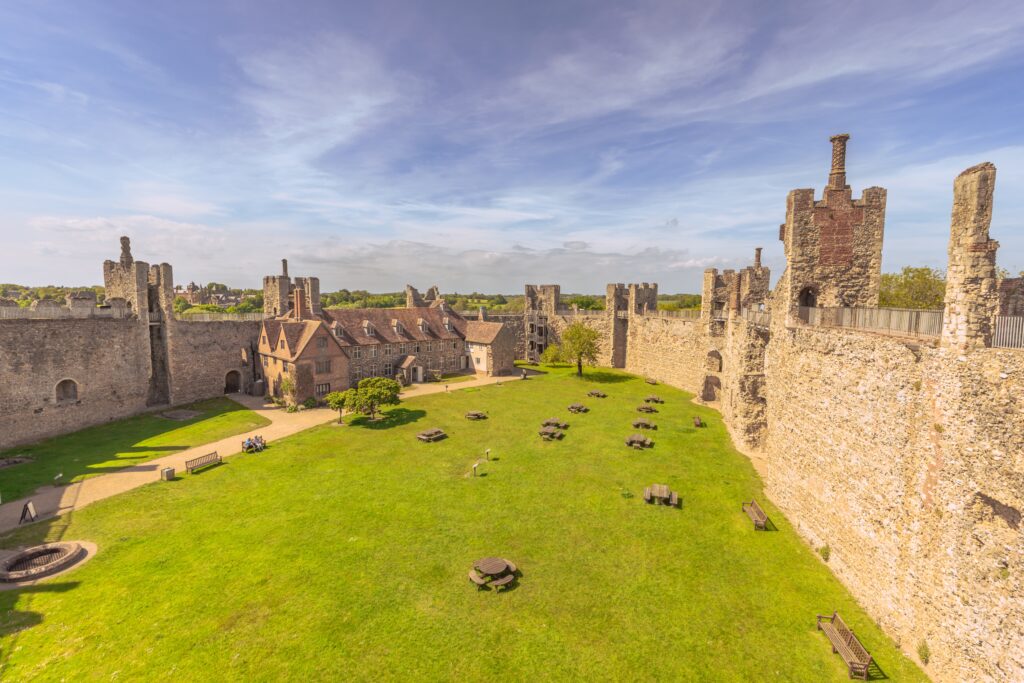
On a rise overlooking the Suffolk countryside, Framlingham Castle stands as a formidable reminder of England’s turbulent past. Built in the 12th century, its curtain walls and 13 towers encircle a vast open space once filled with halls, kitchens, and chapels. Unlike many castles, Framlingham’s interior buildings are gone, but walking the walls offers breathtaking views across the mere and surrounding fields.
The castle is most famous for its role in Tudor history. In 1553, Mary Tudor rallied her supporters here before marching to London and being proclaimed Queen of England. That moment secured Framlingham’s place in the national story, forever linked to the triumph of “Bloody Mary.”
Today, visitors can explore interactive exhibitions that bring its history to life, from medieval nobility to Victorian poorhouses that later occupied the site. The nearby mere, a lake created by medieval engineers, provides a peaceful setting for walks and wildlife spotting.
Framlingham Castle is both imposing and approachable: a fortress, a landmark, and a symbol of Suffolk’s deep ties to English history.
Orford Castle & Ness
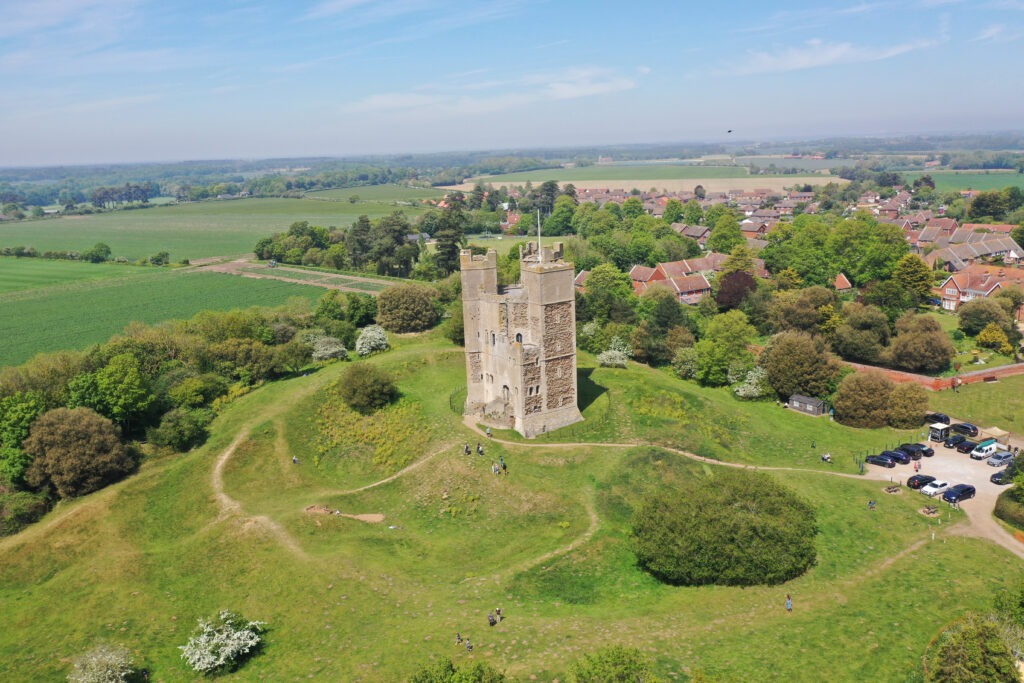
Perched above the quiet village of Orford, this remarkable castle was built by Henry II in the 12th century as a show of royal power. Its unique polygonal keep is unlike any other in England, combining strength with architectural innovation. Inside, spiral staircases and stone chambers evoke the life of a medieval fortress, while the rooftop offers sweeping views across the River Ore and the wild Suffolk coast.
Orford itself is a charming village, with a quay where fishing boats still land their catch and a network of winding lanes lined with historic houses. Beyond lies the mysterious Orford Ness, a vast shingle spit that has served as everything from a military testing site to a nature reserve. Today, managed by the National Trust, it is both eerie and beautiful, with abandoned buildings scattered across a stark, windswept landscape.
Together, the castle, village, and Ness make Orford a destination where history, legend, and wilderness intertwine.
Aldeburgh
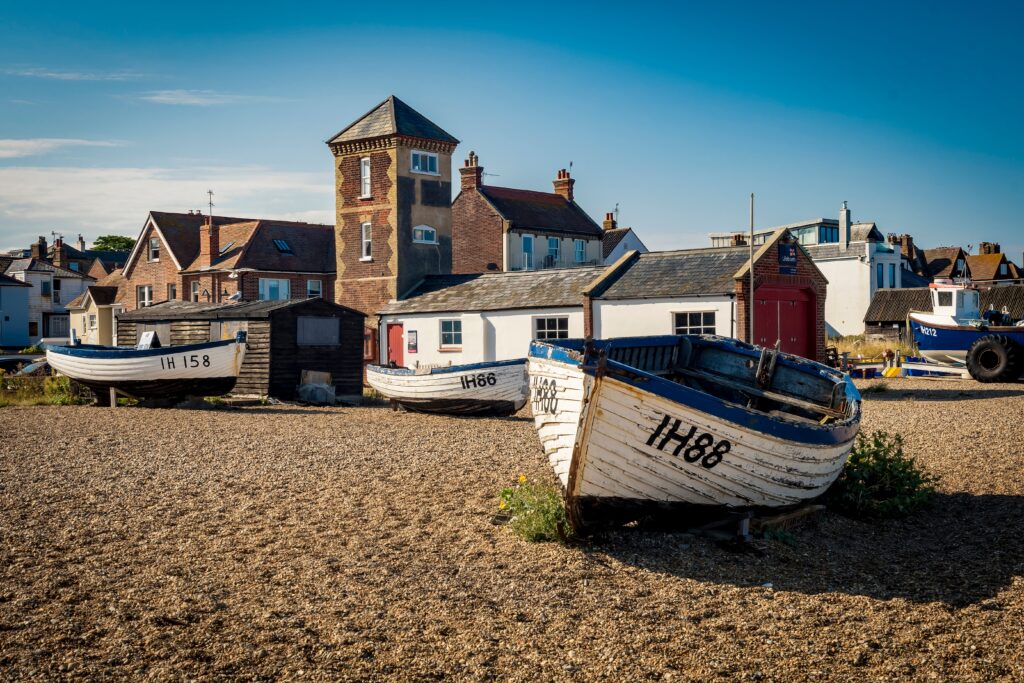
Few places capture Suffolk’s cultural soul like Aldeburgh. This seaside town grew from a fishing village into a resort, yet it has retained its individuality. Its beach, lined with fishing boats and iconic huts selling fresh seafood, gives it a working character, while its elegant seafront houses recall its Victorian heyday.
Aldeburgh’s greatest fame, however, comes from its association with composer Benjamin Britten, who made his home here. The Aldeburgh Festival, founded in 1948, has grown into one of the world’s most prestigious classical music events, centred now at Snape Maltings but rooted in the town’s spirit. On the beach, Maggi Hambling’s striking Scallop sculpture, inscribed with Britten’s words, celebrates this connection.
The town also has a thriving cultural and culinary scene, with bookshops, art galleries, and celebrated fish and chips. Aldeburgh balances coastal charm with international significance, embodying Suffolk’s blend of tradition and creativity.
Southwold

With its brightly painted beach huts, historic pier, and lighthouse rising above the rooftops, Southwold is the quintessential English seaside town. Long popular with holidaymakers, it retains a timeless charm that blends nostalgia with sophistication.
The pier, rebuilt in the early 2000s, combines traditional amusements with quirky modern touches, including eccentric mechanical inventions that delight children and adults alike. The sandy beach and promenade invite leisurely walks, while the town itself offers independent shops, galleries, and pubs.
Southwold is also home to the Adnams Brewery, a Suffolk institution since 1872. Tours reveal the art of brewing, while the brewery’s presence gives the town a lively character. From the lighthouse to the harbour, Southwold combines seaside fun with enduring style, making it one of Suffolk’s most beloved destinations.
Dunwich
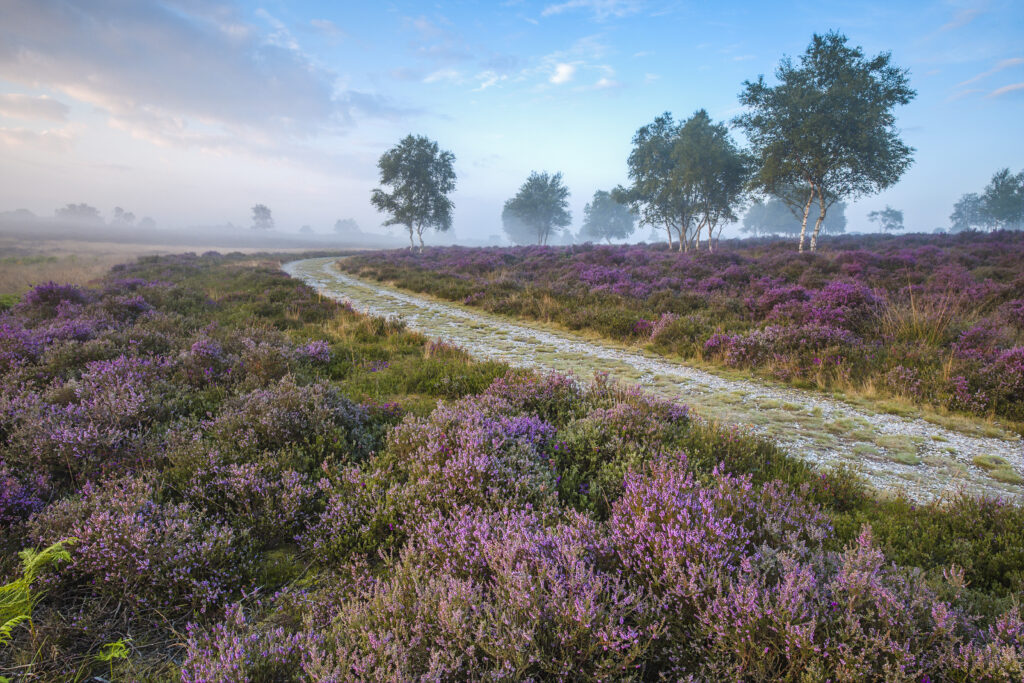
Few places in England are as haunting as Dunwich, once a thriving medieval port and now a small village perched above a crumbling cliff. Centuries of coastal erosion have swallowed much of the old town, including churches, streets, and harbours. Today, only fragments remain, along with tales of lost bells tolling beneath the waves.
The Dunwich Museum tells the story of this “Atlantis of the East,” while the surrounding heath and beach offer natural beauty and tranquillity. Dunwich Heath, managed by the National Trust, is rich in wildlife, from nightjars to rare butterflies, and in summer its purple heather carpets the landscape.
To walk along Dunwich’s coast is to sense both loss and resilience. It is a place where history has been claimed by the sea, yet where beauty endures, leaving visitors with a lasting impression of nature’s power and the fragility of human endeavour.
Walberswick
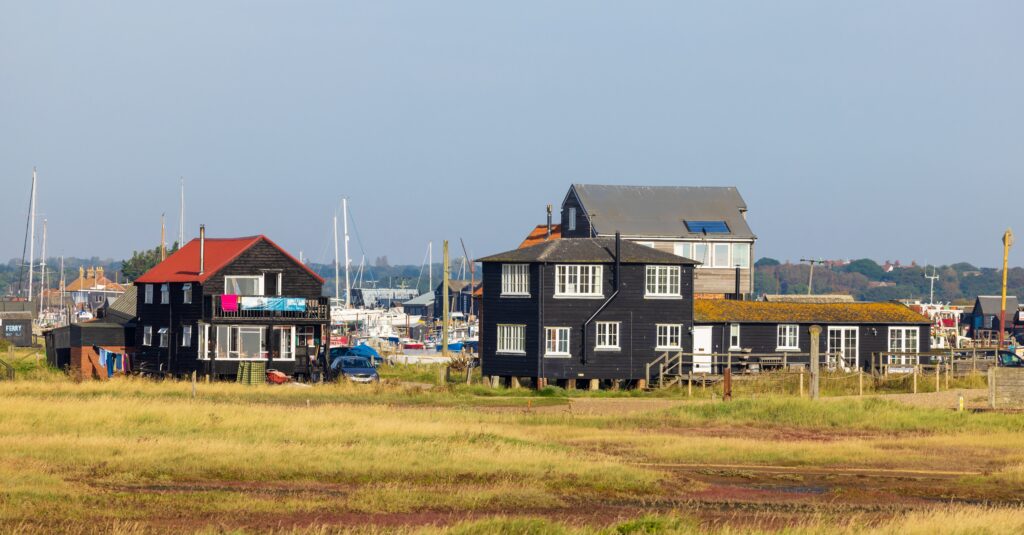
Across the River Blyth from Southwold lies Walberswick, a picturesque coastal village that has long charmed artists, writers, and holidaymakers. Its flint cottages, village green, and sandy dunes create a picture of rural tranquility, while its beach offers open skies and fresh sea air.
Walberswick is best known for the traditional pastime of crabbing. Families line the wooden bridges and quaysides with lines and bait, making it a simple yet joyous ritual that has become part of the village’s identity. In fact, Walberswick once hosted the British Open Crabbing Championship, a testament to its quirky appeal.
The surrounding marshes and heathland form part of the Suffolk Coast & Heaths AONB, with trails ideal for walking and birdwatching. Once a bustling fishing port, Walberswick is now a place of quiet escape, combining natural beauty with a strong sense of community.
Thorpeness
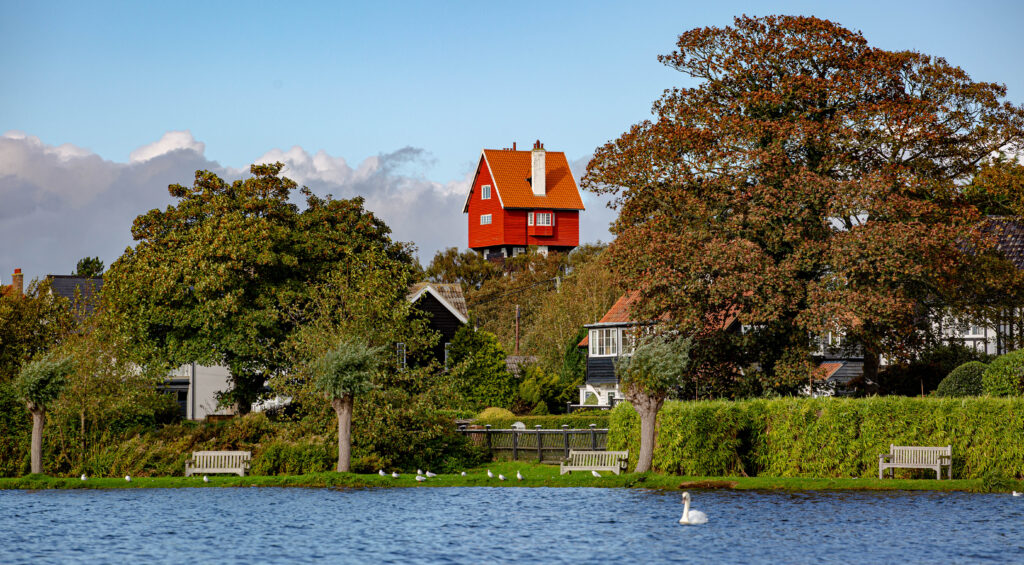
Few villages are as whimsical as Thorpeness, created in the early 20th century by Scottish barrister Glencairn Stuart Ogilvie as a holiday retreat. Designed with mock-Tudor houses and a fairy-tale atmosphere, it feels like something from a storybook.
The village’s most famous landmark is the House in the Clouds, a former water tower disguised as a quirky home, which still delights visitors with its playful design. At its heart lies the Meare, an artificial boating lake inspired by Peter Pan. Tiny islands and coves named after J.M. Barrie’s characters invite children and adults alike to explore by rowing boat.
Thorpeness is also a seaside destination, with a shingle beach and dramatic coastal scenery. Blending eccentric design with natural beauty, it remains one of Suffolk’s most unusual and endearing places.
Snape Maltings
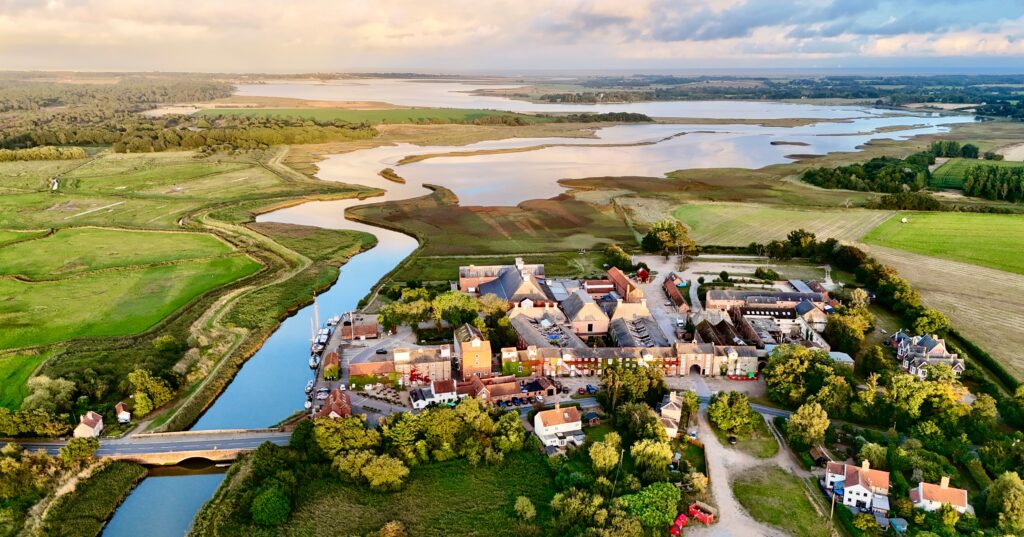
On the banks of the River Alde stands Snape Maltings, once a Victorian industrial site for malting barley, now transformed into a world-class arts centre. Its red-brick buildings and towering chimneys have been repurposed into concert halls, galleries, shops, and cafés, creating a vibrant cultural hub amid marshland and reeds.
The site is best known as the home of the Aldeburgh Festival, founded by composer Benjamin Britten and tenor Peter Pears. The Snape Maltings Concert Hall, with its extraordinary acoustics, hosts performances ranging from classical music to jazz and folk.
Beyond music, Snape Maltings is also about place. Walking trails lead into the surrounding landscape of the Suffolk Coast & Heaths AONB, where saltmarshes, wide skies, and the meandering river create an atmosphere of calm and inspiration. It is a rare site where industry, art, and nature combine in harmony.
Woodbridge
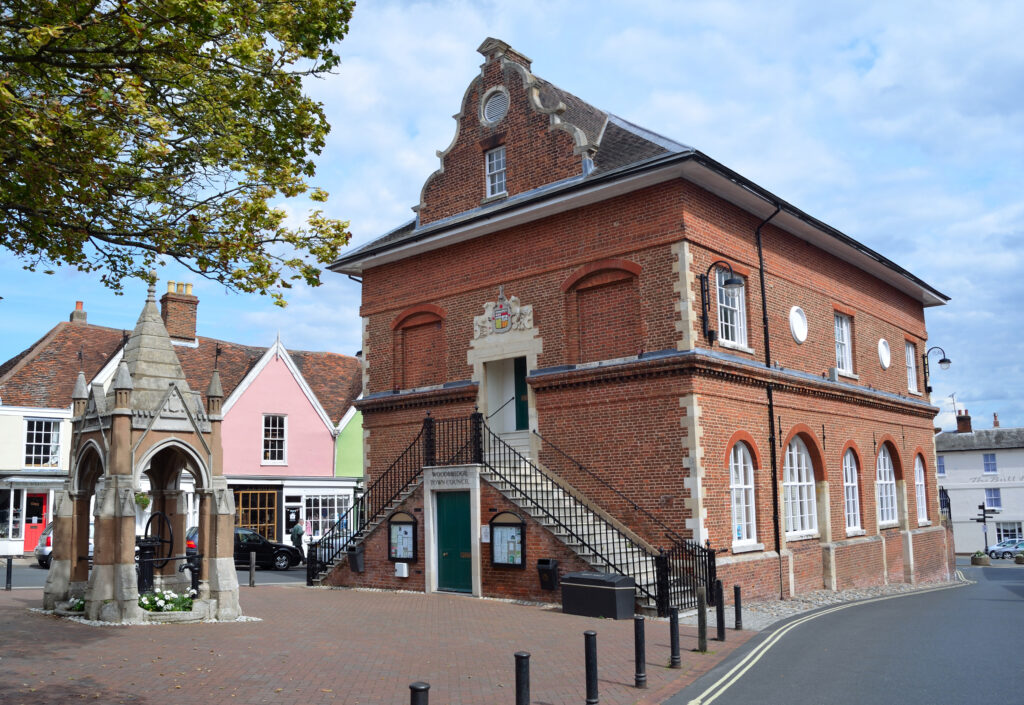
Set on the banks of the River Deben, Woodbridge is a thriving market town with a deep maritime heritage. Once a centre for shipbuilding and sailmaking, its waterfront is still lined with historic boatyards and anchored yachts, reflecting its long relationship with the river.
The town’s most iconic landmark is the Tide Mill, one of the last working tide mills in the world. Carefully restored, it still grinds flour using the power of the tides, offering a rare glimpse into traditional engineering.
Woodbridge itself is full of charm: narrow streets lined with independent shops, cafés, and historic pubs. The town also makes an ideal base for exploring nearby Sutton Hoo, linking the modern community with its Anglo-Saxon past.
With its riverside setting, heritage landmarks, and vibrant local life, Woodbridge epitomises Suffolk’s blend of history and contemporary vitality.
Lavenham

Often called England’s best-preserved medieval village, Lavenham is a living time capsule of Suffolk’s wool trade prosperity. During the 15th and 16th centuries, the village thrived on the cloth industry, and the wealth of that era is still visible today in its timber-framed houses, leaning charmingly over narrow lanes.
At its heart stands the magnificent Church of St Peter and St Paul, a “wool church” built on the profits of cloth merchants. Its tall tower dominates the skyline, symbolising the prosperity of a small village that once ranked among England’s wealthiest.
Today, Lavenham is a place of history and leisure. Galleries, tea rooms, and antique shops fill its crooked houses, while the Guildhall, managed by the National Trust, tells the story of its rise and decline. Lavenham’s atmospheric streets make it a favourite filming location, offering visitors the rare chance to step back into medieval England.
Clare
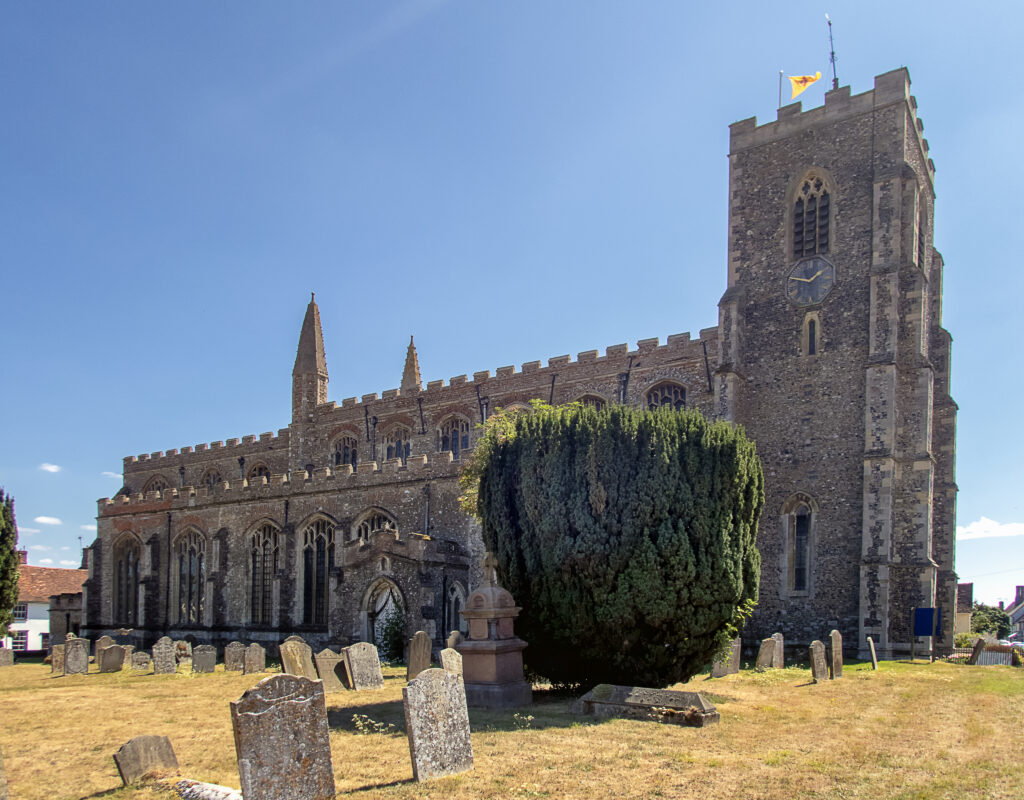
As Suffolk’s smallest town, Clare offers a compact yet rich sense of history. It is home to the ruins of Clare Castle, with its Norman motte still rising above the surrounding parkland. The castle grounds provide lovely walking trails and a reminder of Clare’s medieval importance.
The town itself features beautiful timber-framed houses, a striking parish church, and the Ancient House Museum, which showcases its heritage. Once a market centre tied to the wool trade, Clare retains an intimacy that makes it particularly welcoming.
Surrounded by rolling countryside and walking paths, Clare is both a historic gem and a gateway to exploring Suffolk’s rural landscapes. Its scale may be small, but its character is immense.
Long Melford
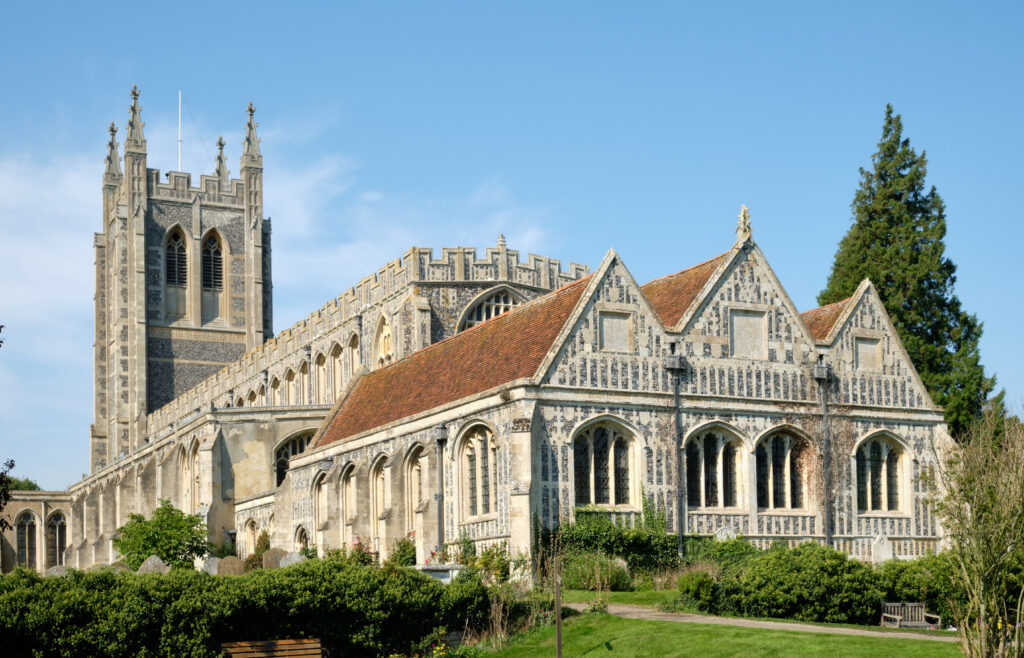
Stretching out along a broad high street, Long Melford is one of Suffolk’s most elegant villages. Like Lavenham, it prospered during the wool trade, leaving behind a legacy of stately buildings and grand churches. The most impressive is the Church of the Holy Trinity, one of the finest examples of a wool church, with elaborate stained glass and intricate carvings.
The village is also known for its historic houses. Melford Hall, a Tudor mansion once visited by Queen Elizabeth I, and Kentwell Hall, famed for its immersive Tudor re-enactments, both open their doors to the public. Together, they provide vivid glimpses into centuries of aristocratic life.
With its antique shops, country pubs, and leafy green stretching through the centre, Long Melford offers charm and grandeur in equal measure, embodying Suffolk’s wool heritage at its finest.
Hadleigh
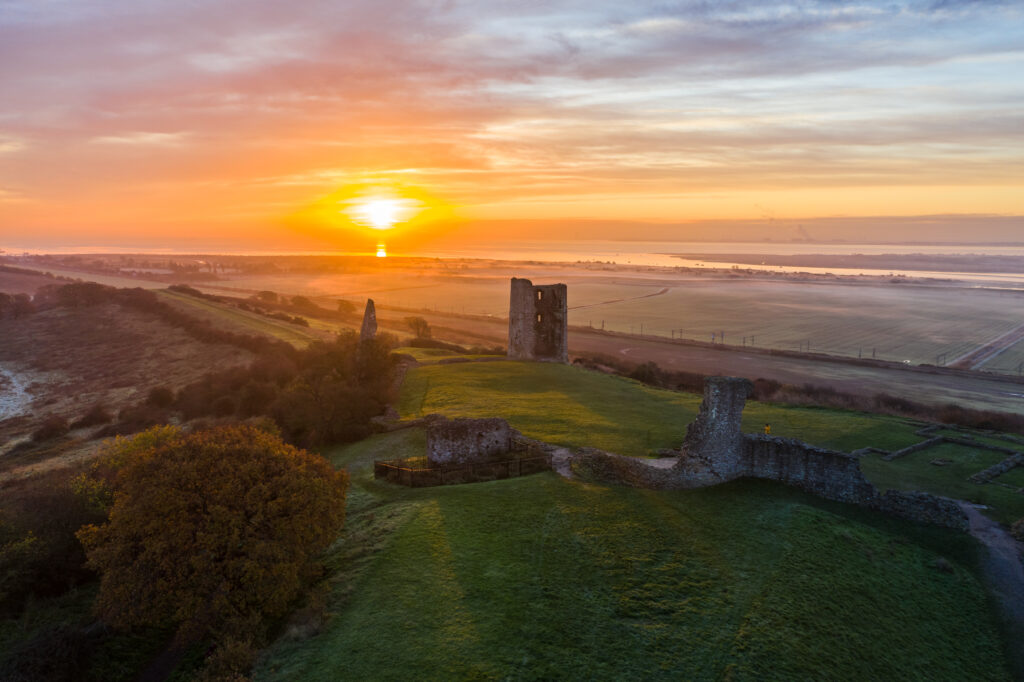
Once a thriving centre of the wool trade, Hadleigh is another of Suffolk’s historic market towns that retains strong medieval character. Its high street is lined with timber-framed houses and coaching inns, while the Deanery Tower, built in 1495, stands as a striking relic of its prosperous past.
The town’s parish church, St Mary’s, is among the largest in Suffolk, with a soaring tower and impressive medieval carvings. Hadleigh’s heritage is complemented by its role as a working town, with markets, shops, and cafés creating a lively atmosphere.
Set amid rolling countryside, Hadleigh combines the charm of a small town with the depth of centuries-old history. It is less visited than Lavenham or Long Melford, yet equally rewarding for those seeking authenticity and tradition.
Bures
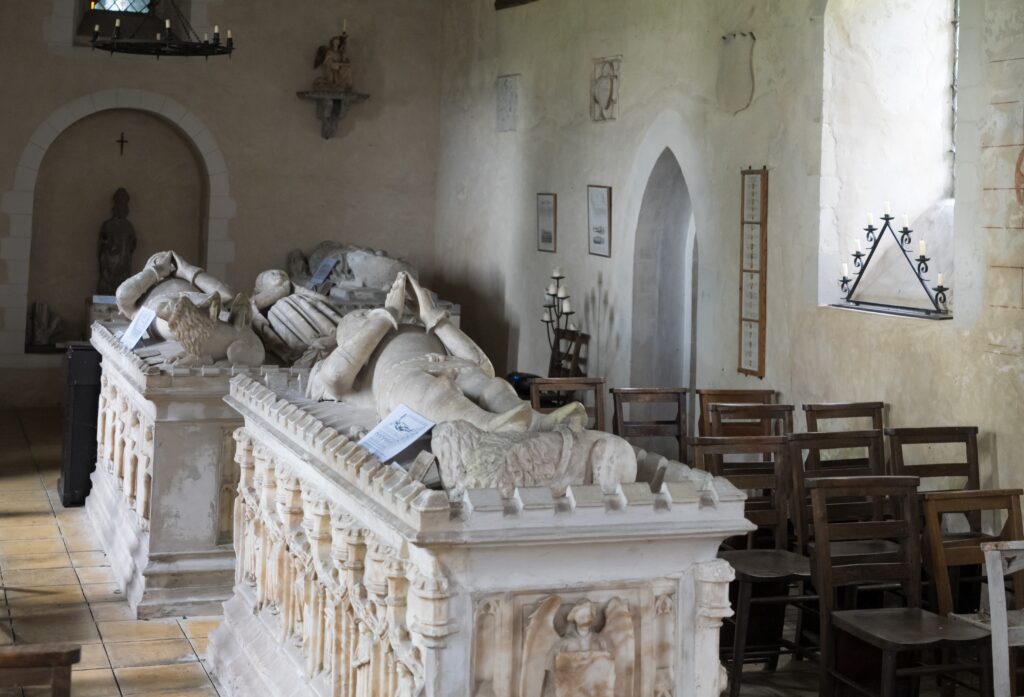
Nestled on the Suffolk–Essex border, Bures is a charming village with a remarkable claim to history: it is said to be the birthplace of St Edmund, the martyred king of East Anglia and later England’s patron saint. A stone cross on the hillside above the village commemorates this connection, making Bures a quiet but significant spiritual site.
The River Stour winds gracefully through the village, its meadows and footpaths forming part of the scenic Stour Valley Path. The village itself retains a timeless quality, with flint cottages, ancient churches, and pubs that reflect rural life at its most authentic.
Bures is not as widely known as other Suffolk destinations, yet its beauty lies in this subtlety: a place where history, nature, and tranquillity meet in perfect balance.
Stowmarket
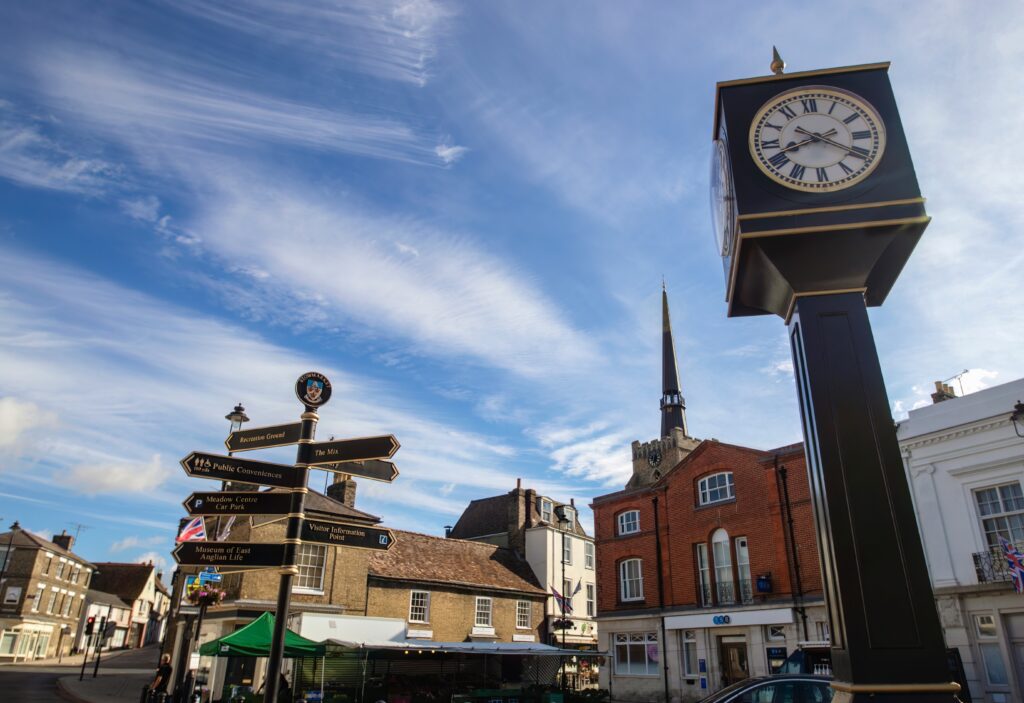
Located at the heart of Suffolk, Stowmarket blends a lively market-town atmosphere with cultural and historical interest. Its name derives from “stow,” meaning meeting place, and for centuries it has been a hub of trade and community life.
The town’s highlight is the Museum of East Anglian Life (recently renamed Food Museum), which spreads across 75 acres of fields, barns, and historic buildings. Here, visitors can explore everything from steam engines to traditional farming practices, offering a rich picture of rural Suffolk heritage.
Stowmarket is also a practical and modern town, with shops, markets, and a strong local community. Its central location makes it an ideal base for exploring the wider county, while its cultural scene—anchored by the Regal Theatre—ensures it remains vibrant and relevant.
Eye
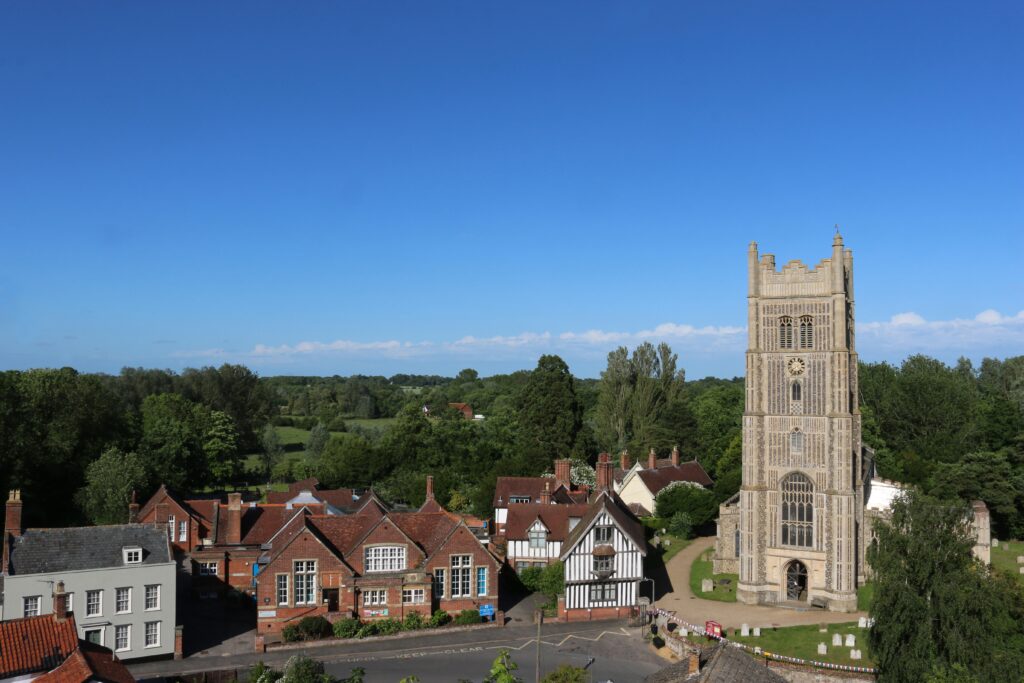
With its striking red-brick castle keep rising above the town, Eye is one of Suffolk’s smallest but most distinctive market towns. The castle, built in the 11th century, is largely in ruins, but its surviving keep and motte dominate the skyline, offering a glimpse into Norman power.
The town itself is filled with historic charm: timber-framed houses, a handsome church, and a wealth of listed buildings create a sense of continuity with the past. Despite its modest size, Eye has a surprising cultural richness, with art galleries, community events, and local food shops sustaining its character.
Surrounded by gentle countryside, Eye represents Suffolk on an intimate scale—historic, welcoming, and quietly proud of its heritage.
Halesworth
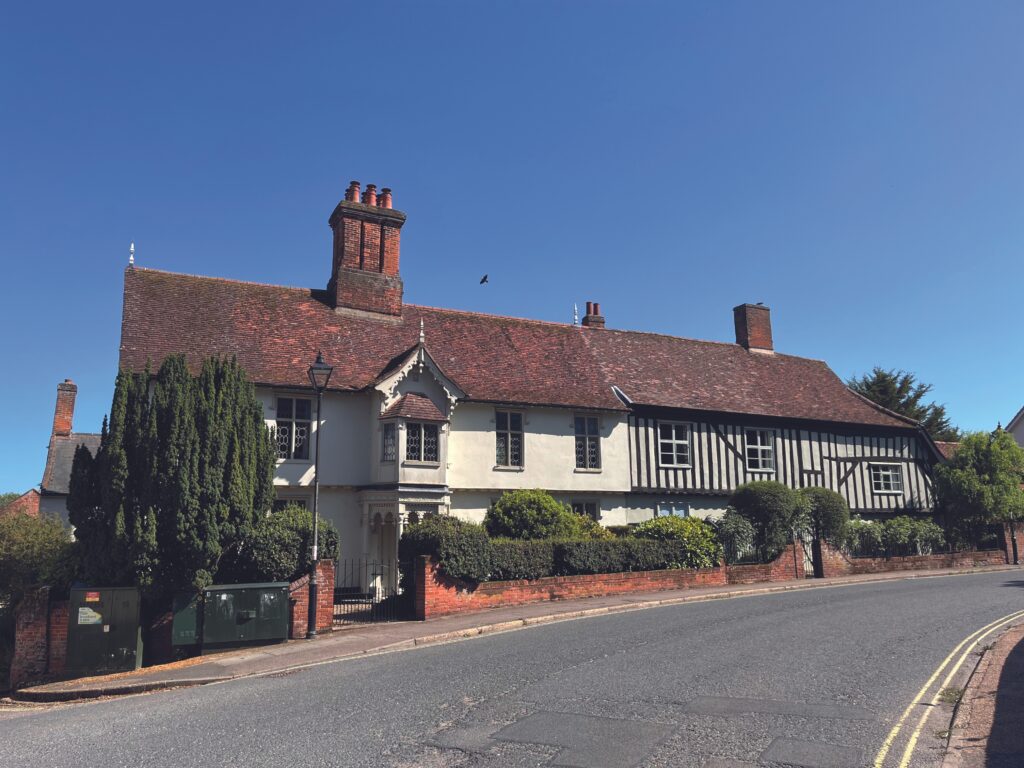
Halesworth is a vibrant market town with deep rural roots. Its medieval layout remains visible in the town’s narrow lanes, while its high street offers a lively mix of independent shops, cafés, and pubs. The town’s history as a hub for brewing, malting, and agriculture is still reflected in its architecture and traditions.
A key feature of Halesworth today is the Cut Arts Centre, housed in a converted maltings building. It has become a focal point for theatre, music, and community events, giving the town a dynamic cultural energy. Just beyond, the Halesworth Millennium Green offers 50 acres of meadows, streams, and woodlands—one of the largest community-owned green spaces in the country.
With its blend of history, culture, and green space, Halesworth is a town that feels both rooted in Suffolk tradition and open to the future.
Beccles
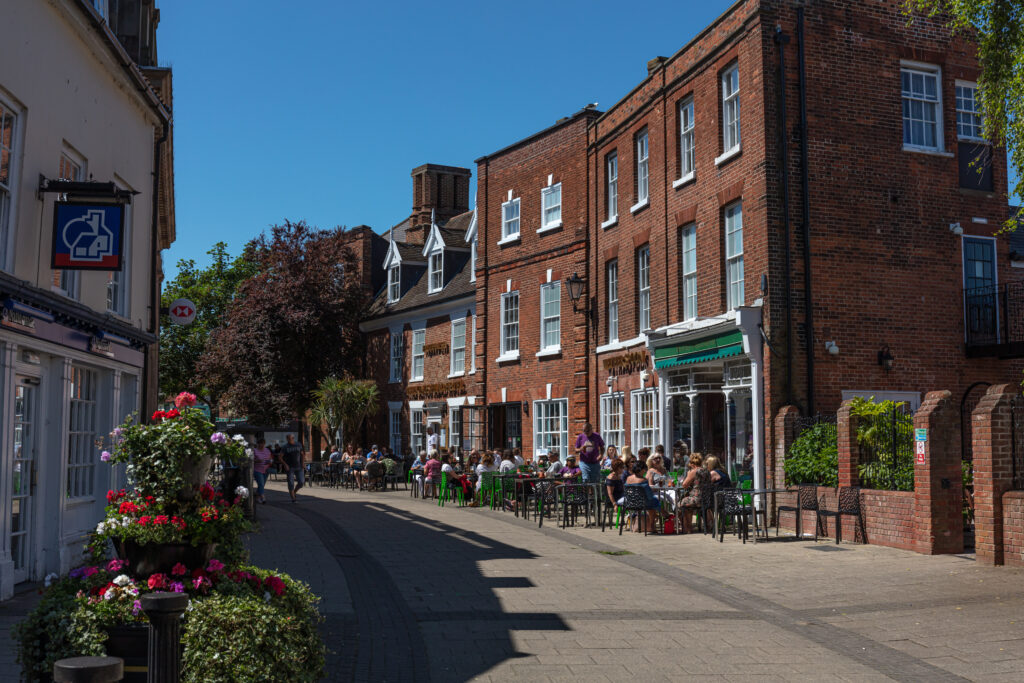
Perched on the River Waveney, Beccles is a lively market town that serves as one of the gateways to the Norfolk Broads. Its riverside location makes it popular for boating, kayaking, and riverside walks, while the town itself combines history with modern life.
The Beccles Bell Tower, standing separate from the parish church, is the town’s most distinctive landmark. From its summit, visitors enjoy far-reaching views across the Waveney Valley. The town centre offers a mix of Georgian and Victorian architecture, with a bustling Friday market and plenty of independent shops.
Beccles is also a cultural hub, hosting festivals, regattas, and community events. Its riverside setting, enhanced by meadows and marshes, provides a balance of activity and tranquility, making it one of Suffolk’s most welcoming towns.
Bungay
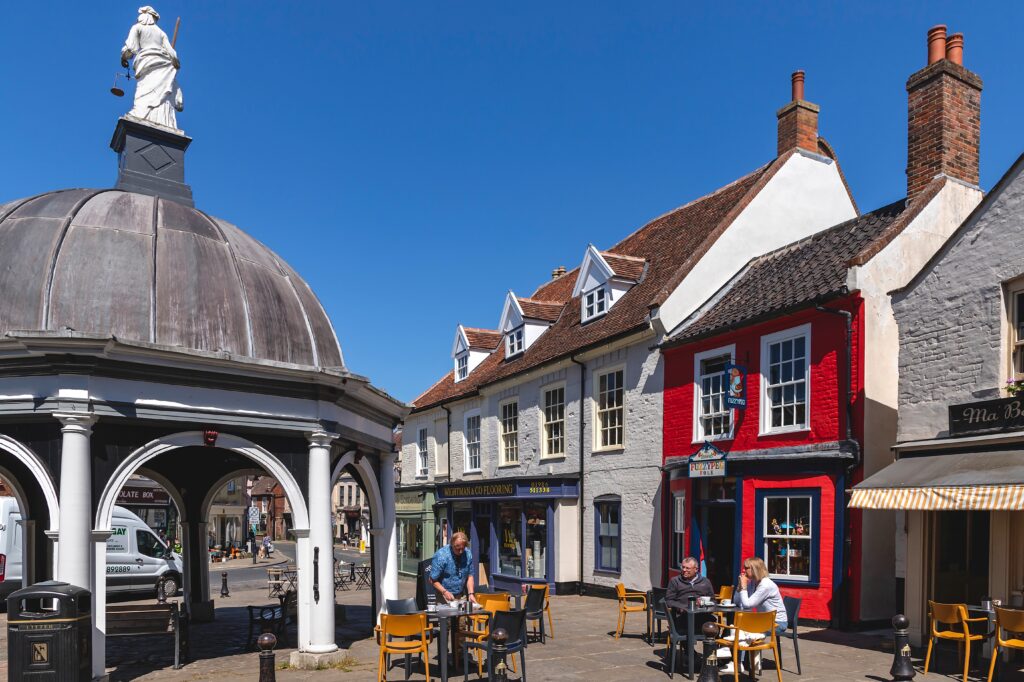
Nearby lies Bungay, a market town with a rich medieval past and a strong sense of identity. The ruined remains of Bungay Castle, built by the powerful Bigod family in the 12th century, dominate its historic core, while the parish church of St Mary rises impressively nearby.
Bungay is known for its folklore, particularly the tale of Black Shuck, the ghostly black dog said to have stormed through the church during a storm in 1577. This legend remains part of the town’s charm, celebrated in local storytelling and culture.
Today, Bungay thrives as a centre for antiques, books, and the arts. Its independent spirit is reflected in community projects, festivals, and the surrounding countryside of the Waveney Valley, which offers excellent walking and cycling. Bungay is a place where history and creativity intertwine seamlessly.
Felixstowe
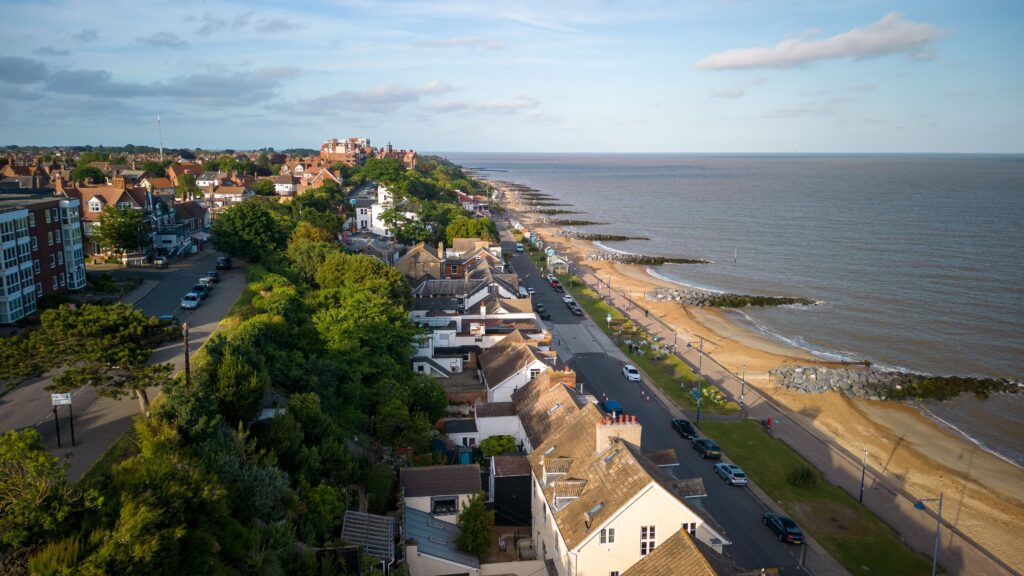
Felixstowe is Suffolk’s primary seaside resort, with a dual identity as both a holiday destination and home to Britain’s largest container port. Its seafront is classic in character, with a long promenade, colourful beach huts, and gardens that slope down toward the shore.
The Felixstowe Pier, recently redeveloped, provides amusements, cafés, and views of the busy seaways. Nearby, the Seafront Gardens have been restored to their Edwardian glory, offering peaceful green spaces amid the resort atmosphere.
Felixstowe is also historically significant. Landguard Fort, guarding the entrance to the Orwell estuary, has stood since the 17th century and played roles in both defensive battles and military innovation. This combination of maritime history, seaside leisure, and modern industry makes Felixstowe a uniquely layered destination.
Lowestoft
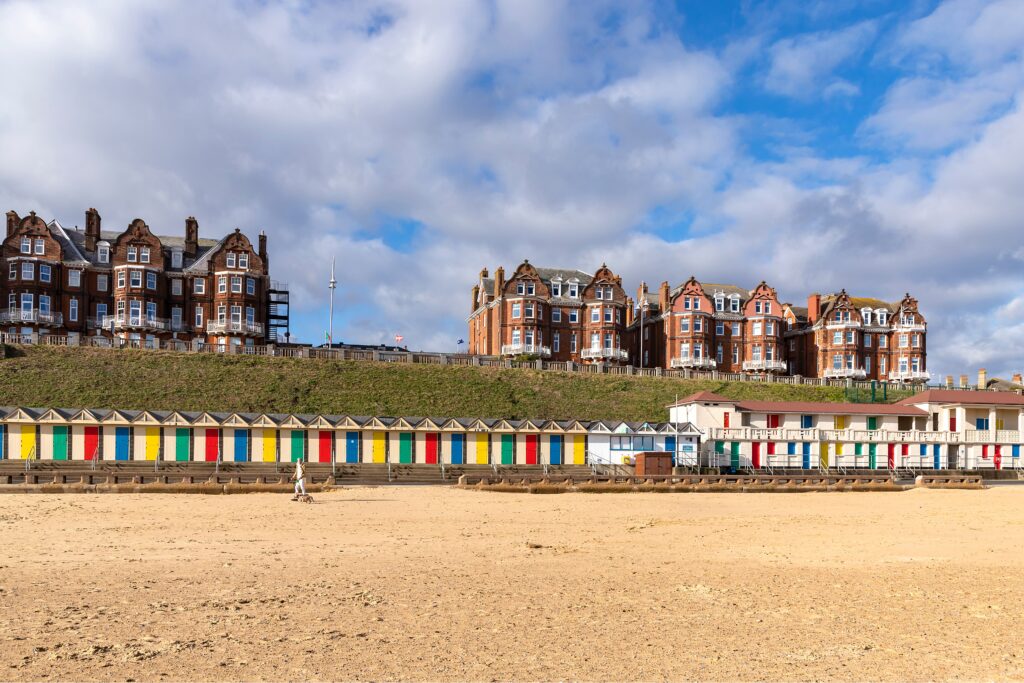
At England’s easternmost point lies Lowestoft, where the sun first rises on the country each morning. Once a major fishing port, Lowestoft remains proud of its maritime heritage, preserved in the Maritime Museum and celebrated through community traditions.
The town boasts sandy beaches, making it a family-friendly resort, alongside its working harbour. The Royal Plain Fountains and Claremont Pier add to its seafront attractions, while inland, the Lowestoft Museum tells the story of the town’s people and industries.
Lowestoft is also notable for its role in the herring industry, once central to its economy, and for being the birthplace of composer Benjamin Britten, whose work remains entwined with Suffolk’s identity. Today, with regeneration efforts and cultural projects, Lowestoft is redefining itself as both a coastal resort and a community looking forward.
Kersey
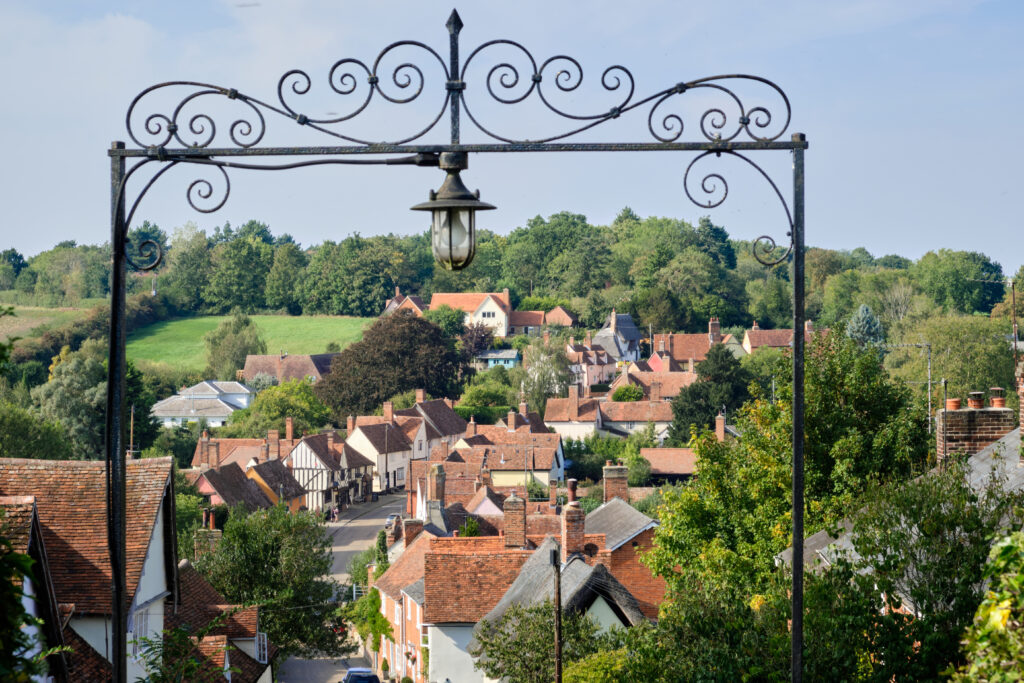
Often cited as one of the most beautiful villages in England, Kersey is a jewel of Suffolk. Its narrow lanes, timber-framed houses, and thatched cottages slope gently toward the famous ford, where water flows across the main street and cars splash through—one of the most photographed scenes in the county.
The village’s wealth during the medieval wool trade is evident in the imposing Church of St Mary, which towers above the surrounding cottages. Inside, stained glass and medieval carvings tell of a time when Suffolk’s villages prospered on cloth exports.
Today, Kersey remains remarkably unspoiled. Walking through its lanes feels like stepping back in time, with little to disturb the sense of continuity from the 15th century to the present. It is Suffolk at its most picturesque, a village that embodies the timeless beauty of the English countryside.
Cavendish
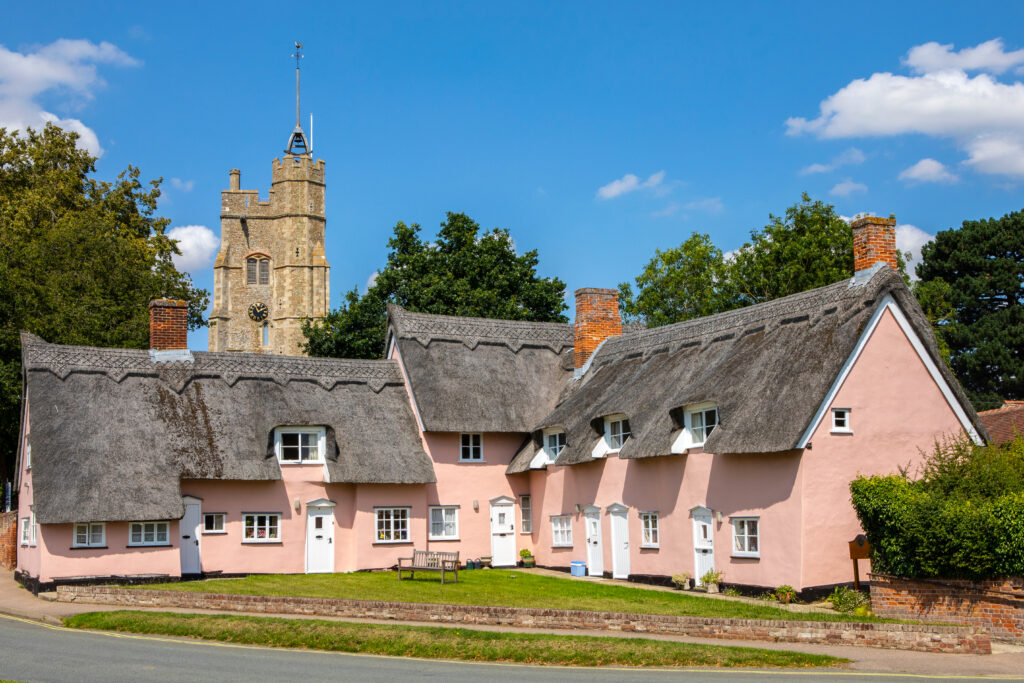
Set in the lush Stour Valley, Cavendish is one of Suffolk’s most charming and photographed villages. Its green, framed by pastel-coloured cottages and overlooked by the graceful Church of St Mary, creates an idyllic picture of rural life.
Cavendish has strong historical connections, lending its name to the powerful Cavendish family, later the Dukes of Devonshire. The village flourished during the wool trade, and traces of that prosperity remain in its fine houses and church.
With its riverside setting, surrounding meadows, and gentle lanes, Cavendish is not just beautiful but deeply atmospheric. It encapsulates the quiet charm of south Suffolk’s villages, where history and scenery combine to create lasting impressions.
Sudbury
Sudbury is a thriving market town on the River Stour, renowned both for its historic wool trade and its artistic heritage. In the Middle Ages, it was one of Suffolk’s principal centres of cloth production, and its grand churches—such as St Peter’s and All Saints—still reflect that wealth.

Sudbury’s most famous son is the painter Thomas Gainsborough, whose birthplace is now a museum and gallery dedicated to his life and works. The surrounding Stour Valley, with its rolling meadows and riverbanks, inspired much of his art and continues to attract walkers and artists alike.
Today, Sudbury combines its historic core with a bustling market, independent shops, and lively community life. Its mix of artistic, historic, and natural appeal makes it one of Suffolk’s most rewarding towns to visit.
Nayland
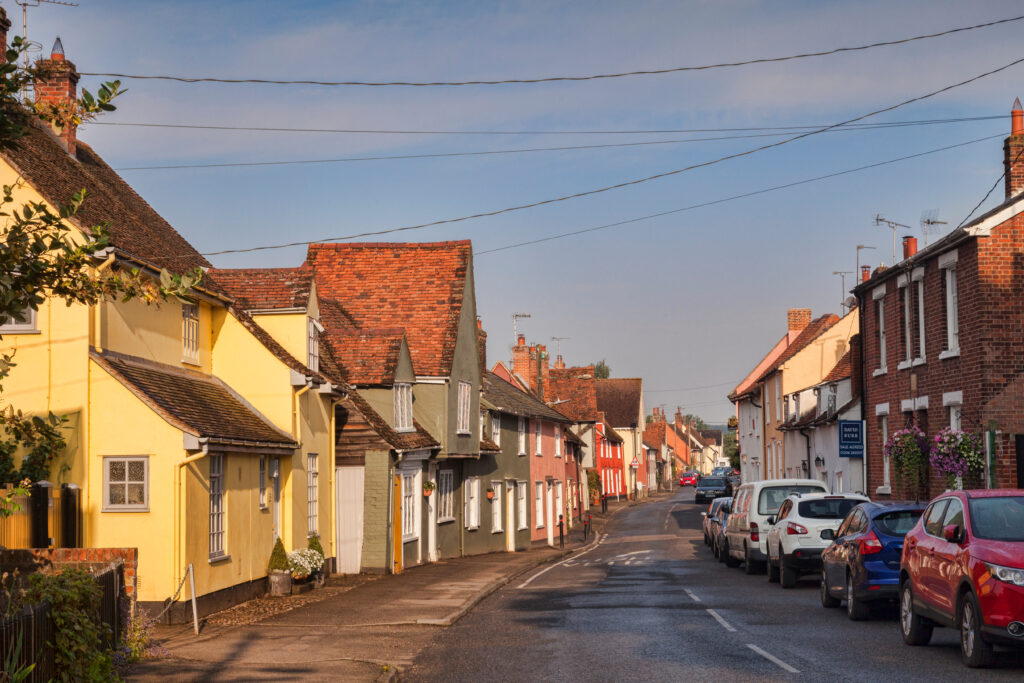
On the Suffolk–Essex border, Nayland is a picturesque village that prospered during the cloth trade and retains much of its medieval character. Its high street is lined with half-timbered houses and historic inns, many dating back to the 15th and 16th centuries, giving the village a timeless feel.
The parish church of St James, with its fine tower, reflects Nayland’s former wealth, while the village’s riverside setting along the Stour adds to its beauty. Once a bustling centre of cloth production, Nayland has shifted into a quieter role, celebrated for its heritage and charm.
Surrounded by scenic countryside and connected by footpaths to the wider Stour Valley, Nayland is a perfect example of Suffolk’s ability to preserve its past while offering peace and beauty in the present.
Haverhill
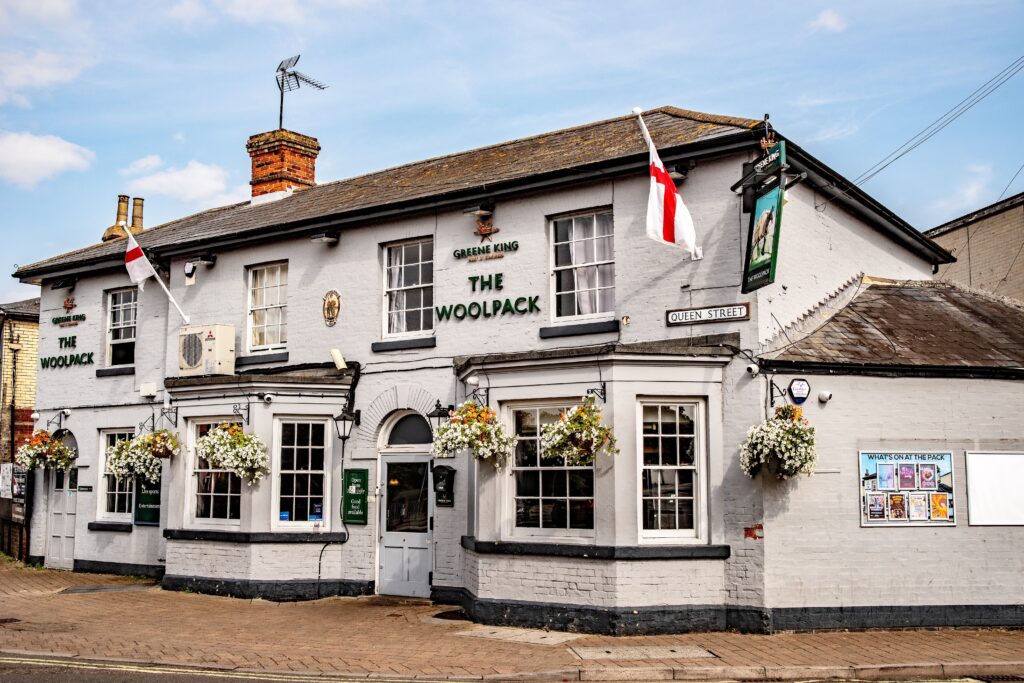
Haverhill, on the western edge of Suffolk, has a different feel from many of the county’s more historic towns. Once a traditional market centre, it underwent rapid growth in the mid-20th century, when it was designated as one of London’s “overspill” towns. This expansion gave Haverhill a more modern identity, with new housing and industries shaping its landscape.
Despite its modern growth, Haverhill retains historic elements, particularly around its church and market area. The town is also notable for its thriving cultural and sporting life, with venues such as the Arts Centre providing theatre, music, and film for the local community.
Surrounded by rolling countryside and close to the borders of Essex and Cambridgeshire, Haverhill serves as a gateway between Suffolk and its neighbouring counties. Its story reflects Suffolk’s ability to adapt and change, blending heritage with modern growth.

